
News
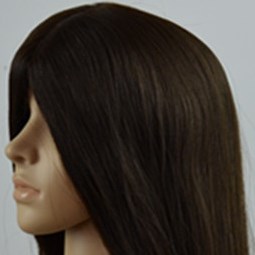
Jews & blacks share love of sheitels
Published
9 years agoon
By
adminANT KATZ
Jessie Cohen, who writes on gender issues for the Mail & Guardian, wrote an amazing op-ed piece on sheitels in the M&G last week. So impressive was the piece, that it enjoyed a full page in the M&Gs Comment and Analysis section.
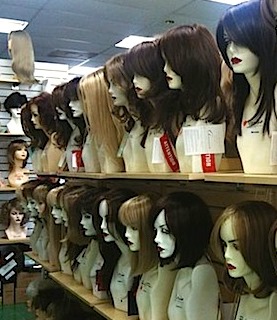 The article, which is published verbatim below, can also be read on M&G, just click on the link here: Face the fro and say hello, gorgeous. The article was sub-titled: “Frizz is fine for men, but women must iron out or wig up? That sheitel ain’t funny, girl.”
The article, which is published verbatim below, can also be read on M&G, just click on the link here: Face the fro and say hello, gorgeous. The article was sub-titled: “Frizz is fine for men, but women must iron out or wig up? That sheitel ain’t funny, girl.”
Among the more interesting issues and statements to emerge in the M&G article, are:
- Jews were seen by Afrikaners as “the archetypical subversive or outsider”, says historian Milton Shain
- In the 1940s, Dr DF Malan decided to extend the privileged white social position to Jews under apartheid
- “Fake hair is in. Even black people wear sheitels now,” says Sheitel specialist Hayley Phetla on the shared beauty culture
- “The Jewfro sheitel” needs to be “put squarely on the menu” writes Jessie Cohen
Cohen’s “Face the fro and say hello, gorgeous”
The time has come to speak plainly about the Jewfro. A Google search reveals a disturbing fact about the recent surge of appreciation for this “curly mop of hair … sported by many a Jewish brother” (Urban Dictionary): it is exclusively celebrated on men.
Growing up among secular and religious Jews in North London, I often felt the odd one out for failing to iron my hair into a sleek, controlled style. When I did conform, I felt a twisted sense of achievement, which seemed to bring me closer to the conventional “ideal”.
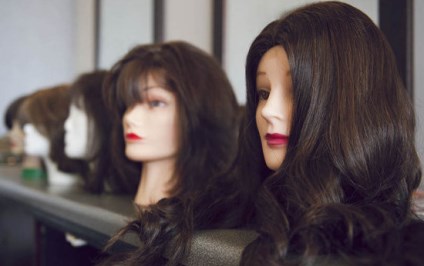
LEFT: Shades of Stepford: At House of Hair in Glenhazel sheitels are dropped off to be washed and styled
At 16, my French teacher picked me out in class to teach us the word for “curly”. With guttural revulsion she yelled, “frisé!,” which was greeted by a ripple of laughter and a snuffed snort from the teacher herself. The message was clear: in its natural form, my hair was not a facet of beauty, but a point of comedy.
In the 2000s, when Seth Cohen (Adam Brody) sported the Jewfro in The OC and Ben Stone (Seth Rogen) answered a hair compliment with, “I use, uh, Jew, it’s called” in Knocked Up, the white man’s Afro rocketed into Western hipster mainstream. As a boy, my father would try to tame his upward-growing nest to approximate the look of the Beatles or David Cassidy.
Today, young Jewish men are freed of this pressure. Why can’t Jewish women also embrace their curly credentials?
Jews arrived in SA with “alien appearance”
In South Africa, ambivalence towards “looking Jewish” can be chalked up to a tumultuous history of exclusion.

Historian Milton Shain describes the late 19th-century Afrikaner understanding of the Jew as “the archetypical subversive or outsider”, arriving from Eastern Europe with “alien appearance”.
RIGHT: An article in the JEWISH DAILY FORWARD entitled: “Jewish Wigmakers Look to Cambodia for Lustrous Sheitel Hair” showed this picture, captioned: “Growing Business: Jewish customers are a small but important base for companies selling hair in Phnom Penh, Cambodia”
South Africa’s prime minister in the 1940s, Dr DF Malan’s decision to extend the privileged white social position to Jews under apartheid opened up the potential for Jewish people to participate in the pernicious hierarchy of a “white ideal”. From 1948, the Jew was repositioned as a less threatening “other”, accepted but not necessarily embraced in the social order. The wheels were set in motion for an “aspirational whiteness” that oiled possibilities for social inclusion.
For South African Jewish women, this “white ideal” is bound up with imported prescriptions of beauty: light skin, “delicate” features, slim physique and straight hair are presented as the most attractive traits.
A trip to House of Hair – a hairdresser in Glenhazel, Johannesburg – offers some insight into the untapped world of Jewish women and their unwieldy locks. In a typical hair salon scene, a string of women sit in black cloaks while the sound of hairdryers fills the atmosphere with a lulling roar. Among the bustle, three sheitels (wigs worn by married, religious Jewish women) stand in a row, limp and lifeless at the back of the room. They are propped up on heavily made-up plastic and foam model heads with painted-on eyes and finely plucked eyebrows.
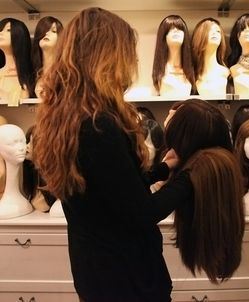 The juxtaposition of real women sitting side by side with their plastic reconstructions gives the chilling impression of a scene out of The Stepford Wives.
The juxtaposition of real women sitting side by side with their plastic reconstructions gives the chilling impression of a scene out of The Stepford Wives.
Sheitel specialist Hayley Phetla tells me that false hair is trendy. Gesturing at a colleague with silky Brazilian extensions, she identifies a shared beauty culture between black and Jewish women: “Fake hair is in. Even black people wear sheitels now.” Judging by the examples on show, Hayley’s comparison also reveals that this commonality crosses over when there is an attempt to appropriate a straight look.
The discussion on women and hair in South Africa has mostly focused on black experience. Wits Art Museum’s 2014 exhibition Doing Hair explored African women’s hair processes in detail, celebrating its diverse, creative possibilities for self-expression. For Jewish women, this movement for reclaiming hair is yet to catch on.
Streisand purred at herself in the mirror
With heightened concentration, Hayley tends to the sheitels: two are straight and shoulder-length; the third is long. She tells me she is styling it “curly” but, on completion the look is so smooth and rigid it seems to warrant a different name.
I catch the reflection of the “curly” wig against my image – the un-approximated “real deal” – jogging a memory of the opening line in Funny Girl (1968) when Barbra Streisand confronts her “Jewish” features in the mirror and purrs unapologetically: “Hello gorgeous.”
Although Streisand’s “big features” didn’t include curly hair, the star refused to change her nose or soften her belting voice, showing Jewish women it is possible to feel beautiful in one’s natural skin. Gazing back at the artificial curls, I felt bewildered that, in light of these efforts, we still feel the need to flatten our features to a diluted version of the original.
After Dirty Dancing (1987), Jennifer Grey transformed her natural nose and curly bob to a smaller nose and straightened hair. She has since regretted this decision, which backfired as an attempt to land bigger Hollywood roles.
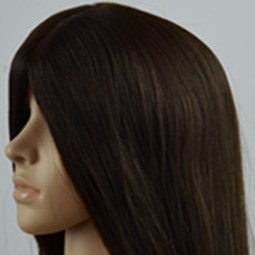 Even Streisand was ambivalent about her look, famously insisting on being filmed from selected angles. In this Americanised post-1994 culture, South Africa’s importation of Western women role models offers an insecure image when it comes to self-expression for “different looking” women.
Even Streisand was ambivalent about her look, famously insisting on being filmed from selected angles. In this Americanised post-1994 culture, South Africa’s importation of Western women role models offers an insecure image when it comes to self-expression for “different looking” women.
Hayley assures me that sheitels come in all shapes and colours, insisting that there is no distinguishable “type”. Darren Tannenwald, a Jewish woman who is getting a blow-dry next to the sheitel area, reminisces about the excitement she’d feel when she had the option of wearing three different sheitels – three different looks – in a week. She tells me that, until recently, she wore a sheitel for nine years but becomes cagey when I ask her why she stopped. Emphasising the positives, Darren describes wearing a sheitel as a time of worthy self-sacrifice: “I never had a bad hair day. It can be very hot but I always looked beautiful.”
Until the Jewfro sheitel is put squarely on the menu and Jewish women can start to feel creative with their natural hair, the true range of our beauty remains suppressed. When it comes to enjoying our bodies and living on our own terms, the least we can do is grow some breasts, woman up and face the fro.





Chris
Mar 19, 2015 at 11:24 am
‘Uh… is it entirely ethical to just lift our story wholesale?’